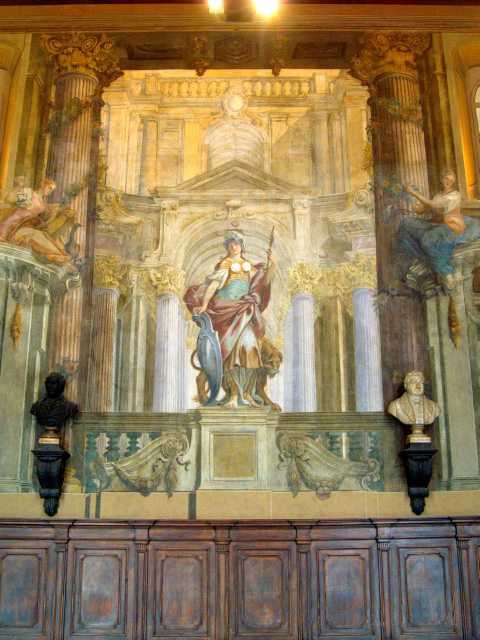Castel Capuano is the second oldest castle in Naples, located in the historic center of the city. The Castle took its name from the nearby Porta Capuana, that leads to the ancient Capua.
The Castle was built in 1160 by the architect Buono on behest of the King of Sicily William I. Although its austere appearance that made it look more like a military garrison, equipped as it was with strong fortifications, Castel Capuano was immediately destined to be the royal residence of the Norman rulers. Subsequently, in 1231, Federico II modified the Castle and gave it the appearance of a Royal Palace. After the construction of the 'Maschio Angioino' as a royal residence, the Castle was downsized as a residence for members of the royal family. Francesco Petrarca also lived in the Castle.
It was the site of countless events of historical importance, such as the wedding of Carlo di Durazzo and the assassination of Sergianni Caracciolo.
With the annexation of the Kingdom of Naples to the Spanish Crown, Castel Capuano was transformed into a palace of justice and the Castle was modified to adapt to its new function: its internal spaces were changed, and the basements became a prison equipped with torture chambers.
Over the course of time, the Castle has undergone numerous restorations that have increasingly modified the original construction.
On the entrance portal of Castel Capuano stands a plaque celebrating the victory of Charles V in Tunis and the date on which the Castle became the seat of the Court of Justice. Above this plaque there is a large double-headed eagle, the Royal Coat of Arms of the Spanish, and higher up the Savoy Coat of Arms affixed after the Unification of Italy replacing the one of the Bourbons.
One of the most interesting internal rooms is certainly the Hall of the Court of Appeal, with frescoes by Antonio Cacciapuoto and other artists, executed at the end of the 18th century. These particular frescoes depict allegories of the provinces of the kingdom: the province of Marsi, Vestini, Picentini, Irpini, Lucania, Brutium Citerius and Brutium Ulterius.
Another important room is 'Sala dei Busti' which, located on the first floor, now houses the marble busts of the most famous lawyers of Naples.

- Monday:
-
09:00 - 18:00
- Tuesday:
-
09:00 - 18:00
- Wednesday:
-
09:00 - 18:00
- Thursday:
-
09:00 - 18:00
- Friday:
-
09:00 - 18:00
- Saturday:
-
09:00 - 18:00
- Sunday:
-
09:00 - 18:00








